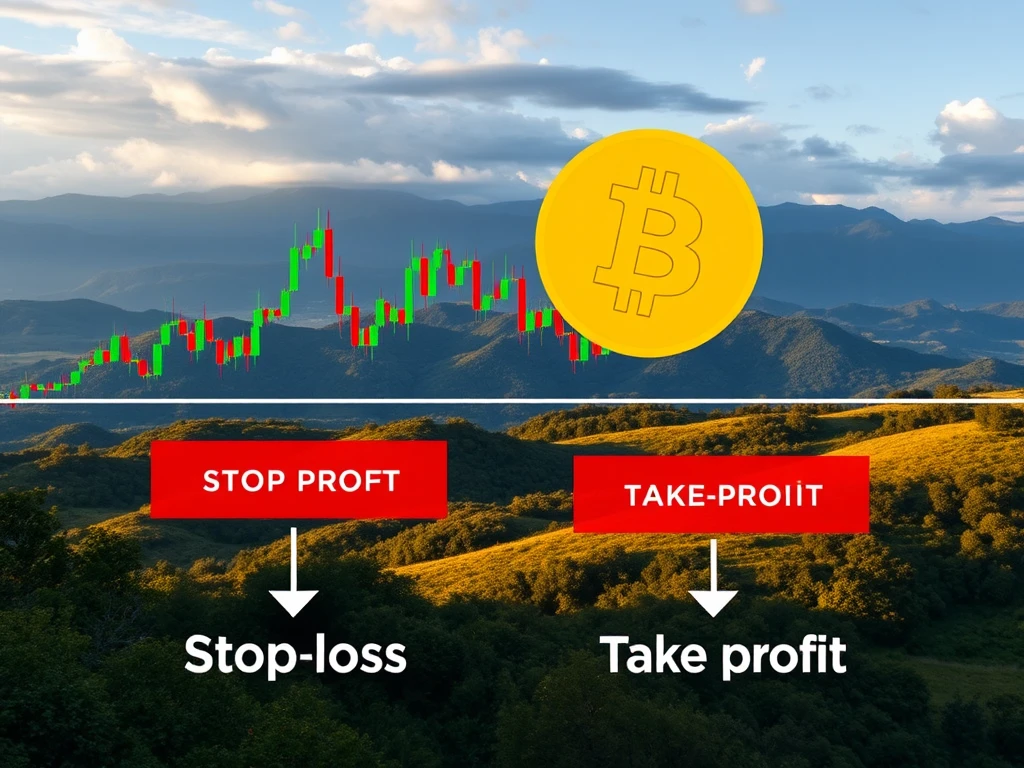Master Bitcoin Trading: Essential Stop Loss and Take Profit Strategies

Navigating the fast-paced world of cryptocurrency requires smart strategies. For anyone involved in Bitcoin trading, two essential tools stand out for protecting your capital and locking in profits automatically: stop-loss and take-profit orders.
What are Stop Loss and Take Profit Orders in Crypto Trading?
Stop-loss and take-profit orders are automated instructions you place on a trading platform. They are designed to execute a trade when a specific price level is reached, helping traders manage risk and secure gains without constant market monitoring.
- Stop-Loss Orders: These orders aim to limit potential losses. You set a price below your entry point for a long position (or above for a short position). If the market price drops to this level, the order triggers, selling your asset and preventing further downside.
- Take-Profit Orders: These orders are used to secure gains. You set a price above your entry point for a long position (or below for a short position). When the market price reaches this target, the order triggers, selling your asset and locking in your profit.
These tools remove emotion from trading decisions, preventing impulsive actions during volatile price swings. While widely used in traditional markets, they became critical for crypto trading due to its inherent volatility.
Why is Stop Loss Crucial for Bitcoin Trading?
Bitcoin’s price can still experience significant and rapid swings. Implementing a stop loss order is a fundamental part of effective risk management in this market.
- Mitigating Volatility: Even as Bitcoin matures, sudden drops can occur due to news or large trades. A stop loss automatically limits your downside risk during these events.
- 24/7 Market Protection: The crypto market never sleeps. A stop loss provides automated protection against unexpected price crashes while you are away from your screen.
- Emotional Discipline: Fear and panic can lead to poor decisions. Setting a stop loss beforehand removes the pressure of deciding whether to sell during a sharp decline.
For example, if you buy BTC at $90,000 and set a stop loss at $85,000, your maximum potential loss on that position is capped at $5,000 per BTC.
Why Use Take Profit Orders in Bitcoin Trading?
Just as important as limiting losses is securing your gains. A take profit order ensures you don’t miss out on reaching your price targets.
- Locking in Gains: Bitcoin’s price can rise quickly but also reverse abruptly. A take profit order guarantees you sell when your target is met, securing the profit before a potential pullback.
- Controlling Greed: Without a predefined exit, it’s easy to get greedy and hold out for higher prices, potentially missing the peak. A take profit enforces your strategy.
- Non-Stop Market: Like stop-loss orders, take-profit orders work around the clock, ensuring you capture gains from sudden pumps even when you’re not actively monitoring the market.
If you buy BTC at $90,000 and set a take profit at $95,000, the order will automatically sell your position at $95,000, locking in a $5,000 profit per BTC.
Setting Up Your Stop Loss and Take Profit Orders
While specific steps vary by platform, the general process for setting up these orders for Bitcoin trading is similar:
- Choose a Platform: Select a reputable crypto exchange that offers these order types. Consider fees, liquidity, and security.
- Open a Position: Navigate to the trading interface for your chosen BTC pair (e.g., BTC/USD). Place your buy (long) or sell (short) order.
- Set Stop Loss: Find the option to add a stop loss to your order or open position. Define the price at which you want the stop loss to trigger based on your acceptable risk level.
- Set Take Profit: Similarly, find the option to add a take profit. Define the target price at which you want to secure your gains.
- Confirm and Monitor: Review your order details carefully before confirming. Monitor your active orders and be prepared to adjust them as market conditions change.
Many platforms allow you to set both a stop loss and a take profit simultaneously on a single position.
Best Practices for Stop Loss and Take Profit Placement
Effective risk management goes beyond just setting orders; it involves strategic placement:
- Base Stop Loss on Volatility: Avoid setting stops too tightly. Consider using metrics like Average True Range (ATR) or placing your stop below known support levels to account for typical price swings.
- Avoid Obvious Levels: Round numbers (like $80,000 or $90,000) are often targeted by larger market participants. Placing your stop slightly below support or slightly off a round number can help avoid premature triggering.
- Consider Trailing Stops: A trailing stop loss automatically follows the price as it moves in your favor, helping to lock in more profit while still protecting against reversals.
- Account for Slippage: High volatility or low liquidity can cause orders to execute at a price different from your set level (slippage). Be aware this can happen, especially with stop-loss orders during flash crashes.
Adjusting Your Orders: Adapting Your Risk Management
The market is dynamic, and your orders may need adjustment. Most platforms allow you to modify active stop-loss and take-profit orders.
- Adjusting Stop Loss: Tighten your stop loss as the price moves favorably to reduce risk or move it to your entry price (break-even) once the trade is significantly in profit. You might widen stops during consolidation phases or tighten them before major news events.
- Adjusting Take Profit: Extend your take profit target during strong momentum or breakouts to capture more upside. Alternatively, consider taking partial profits at key resistance levels and letting the rest of your position ride with a revised take profit or trailing stop.
Common Mistakes in Crypto Trading Orders
Even with these tools, mistakes can happen:
- Setting Stops Too Tight: Leads to being stopped out by normal market noise.
- Ignoring Slippage: Can result in larger losses than expected, especially with leveraged positions.
- Chasing Round Numbers: Makes your order an easy target for ‘stop hunts’.
- Forgetting to Adjust: Failing to adapt orders as market conditions change can lead to missed profits or unnecessary losses.
- Misjudging Market Context: Setting orders without considering overall trend, sentiment, or upcoming events.
- Panic Canceling: Letting emotions override your planned strategy during volatility.
Planning, discipline, and regular monitoring are key to avoiding these pitfalls and using stop-loss and take-profit orders effectively for Bitcoin trading.
Conclusion: Smart Risk Management for Bitcoin Trading
Stop-loss and take-profit orders are indispensable tools for effective risk management in the volatile Bitcoin market. They provide automated protection against significant losses and ensure you capitalize on profitable price movements, even when you can’t watch the market constantly. By understanding how to set, place, and adjust these orders, and by avoiding common mistakes, traders can approach crypto trading with greater confidence and discipline, ultimately improving their chances of success.
This article does not contain investment advice or recommendations. Every investment and trading move involves risk, and readers should conduct their own research when making a decision.









